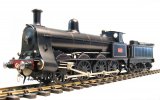Paul,
Well, it's a little late to worry about it now. How does it run? It looks as if you used the kit's coupling rods and by extension that it is rigid. Mine is sprung, although the motor is jammed pretty firmly in place, and does not move around. Did you find that the castings fitted the footplate? Mine were about 2mm short.
Kevin
Well, it's a little late to worry about it now. How does it run? It looks as if you used the kit's coupling rods and by extension that it is rigid. Mine is sprung, although the motor is jammed pretty firmly in place, and does not move around. Did you find that the castings fitted the footplate? Mine were about 2mm short.
Kevin
Last edited:

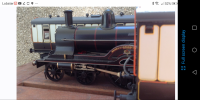
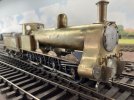
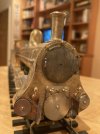
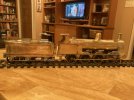
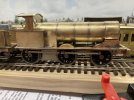
 . Gauge 1 for Mr. Waterman....
. Gauge 1 for Mr. Waterman....